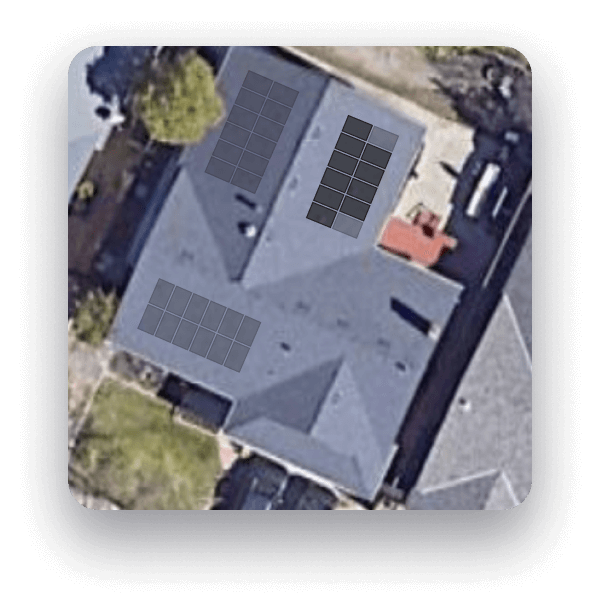Federal incentives, subsidies, and net metering play a key role in encouraging home solar adoption.
China may be among countries leading the world in residential solar but other countries are also doing their fair share of hard work in creating a cleaner, greener planet.
Each country has its own approach: Germany led the way with incentives like feed-in tariffs, while China uses its large-scale solar manufacturing to make solar panels more affordable domestically. Japan and Australia rely on subsidies and advanced grid technologies to boost solar in crowded cities and India focuses on providing low-interest loans.
This article spotlights how six countries around the world are encouraging more homeowners to go solar.
Countries leading the way in residential solar
Here are six countries making sure that solar power is here to stay.
Germany
When it comes to early adopters of solar energy, Germany is pretty high up there. For starters, they pioneered feed-in tariffs (FIT) to incentivize solar investment. Introducing feed-in tariffs in the early 2000s helped rapidly scale the market and established solar as a mainstream energy source.
Germany’s Renewable Energy Act (EEG) includes subsidies, grid prioritization for renewable energy, and grants for battery storage systems. Although there have been reductions in subsidies as of late, the country’s well-established solar infrastructure and a strong green energy culture keep it a leading market for residential solar.

United States
Solar power is currently the fastest-growing economy in the nation and the fastest-growing renewable energy source. Innovations in solar panel design are increasing efficiency, while AI integrations are cutting soft-costs significantly, resulting in lower installation costs. States like California, Texas, and Florida have seen substantial growth in recent years, especially as electricity rates continue to rise.
Federal and state-level tax credits, rebates, and net metering policies help reduce upfront costs for homeowners. While all homeowners can benefit from the 30% federal tax credit, additional incentives exist on a statewide basis. Solar makes the most sense for homeowners based in areas with high electricity rates and an abundance of sunshine.

Australia
Australia’s abundance of sunshine paired with its high electricity rates makes solar a no-brainer for many homeowners. In fact, Australia has one of the highest per-capita solar adoption rates in the world. Federal incentives, state-based rebates, and financial programs further make residential solar even more affordable.
Grid integration and virtual power plants (VPPs) are also big in Australia. With virtual power plants, homeowners with rooftop solar and battery storage can sell their excess energy produced from their systems back to their local grid during peak times. Not to be confused with net metering which operates on an individual basis, VPPs manage several different generation sources to better optimize power production.

China
China has serious manufacturing power in the world of solar, and this definitely comes with certain advantages. For the past 16 consecutive years, China has produced more than 70% of the world’s solar photovoltaic (PV) modules. This allows them to offer solar panels domestically at a fraction of the international cost. The country’s large domestic solar manufacturing sector allows it to accelerate installations while keeping costs low.
The government plays a big role in encouraging more citizens to embrace home solar, particularly through subsidies, tax breaks, and low-cost financing. Their ‘Golden Sun Program’ provides subsidies and includes residential setups while China’s Renewable Portfolio Standards (RPS) ensures that provinces meet minimum renewable energy production quotas.

Japan
Following the Fukushima nuclear disaster Japan made a conscious choice to begin investing in solar energy and other renewables. Japan has since introduced subsidies and net metering programs in an effort to encourage more households to install solar panels on their roofs. Currently, government subsidies cover up to a third of the cost of going solar.
Space efficiency is another driver for solar adoption across Japan. The country has limited land availability and the option for rooftop solar makes better use of the remaining space. Technologies like building-integrated photovoltaics (BIPV) are especially popular in dense cities like Tokyo. For context, Tokyo takes up about 0.6% of the total area of Japan but is home to more than 37 million people.

India
With a growing population and an ever increasing demand for energy, it’s no surprise that residential solar is on the rise in India. Solar batteries are also popular because some of India’s bigger cities experience frequent power outages. According to Bloomberg, daily blackouts have been reported by 38% of the 15,000 households surveyed by the advocacy group LocalCircles.
Subsidies and low-interest loans further incentivize homeowners to install rooftop solar. The Indian government offers capital subsidies of up to to 40% for residential rooftop solar systems while public-sector banks and the Indian Renewable Energy Development Agency (IREDA) provide low-interest loans to support residential solar financing.

Final Thoughts
The global push toward residential solar shows that a clean energy future is not only possible but well within reach. Through innovative policies, tailored incentives, and advances in solar technology, countries like Germany, China, the United States, Japan, Australia, and India have demonstrated effective strategies for scaling solar adoption.


























